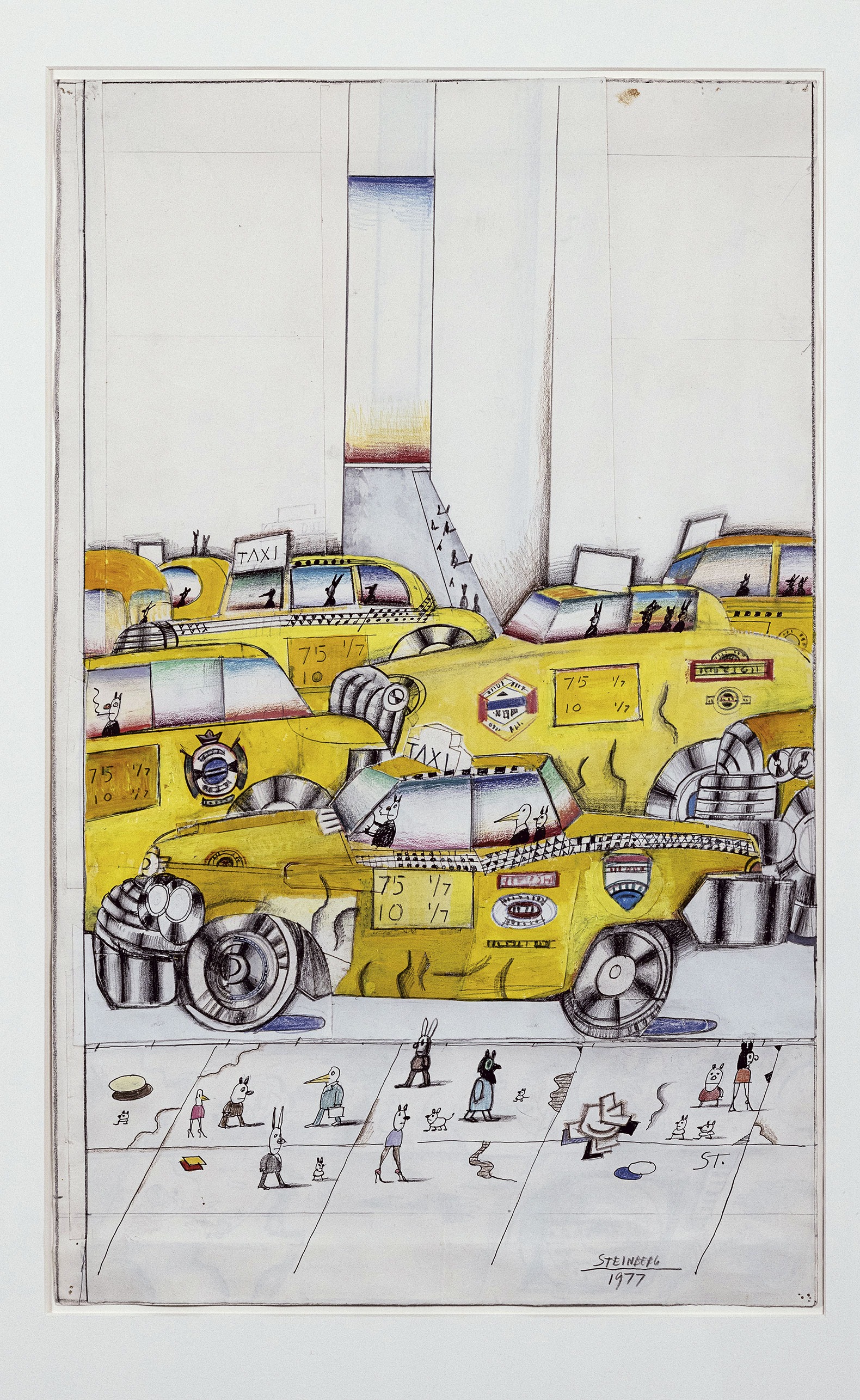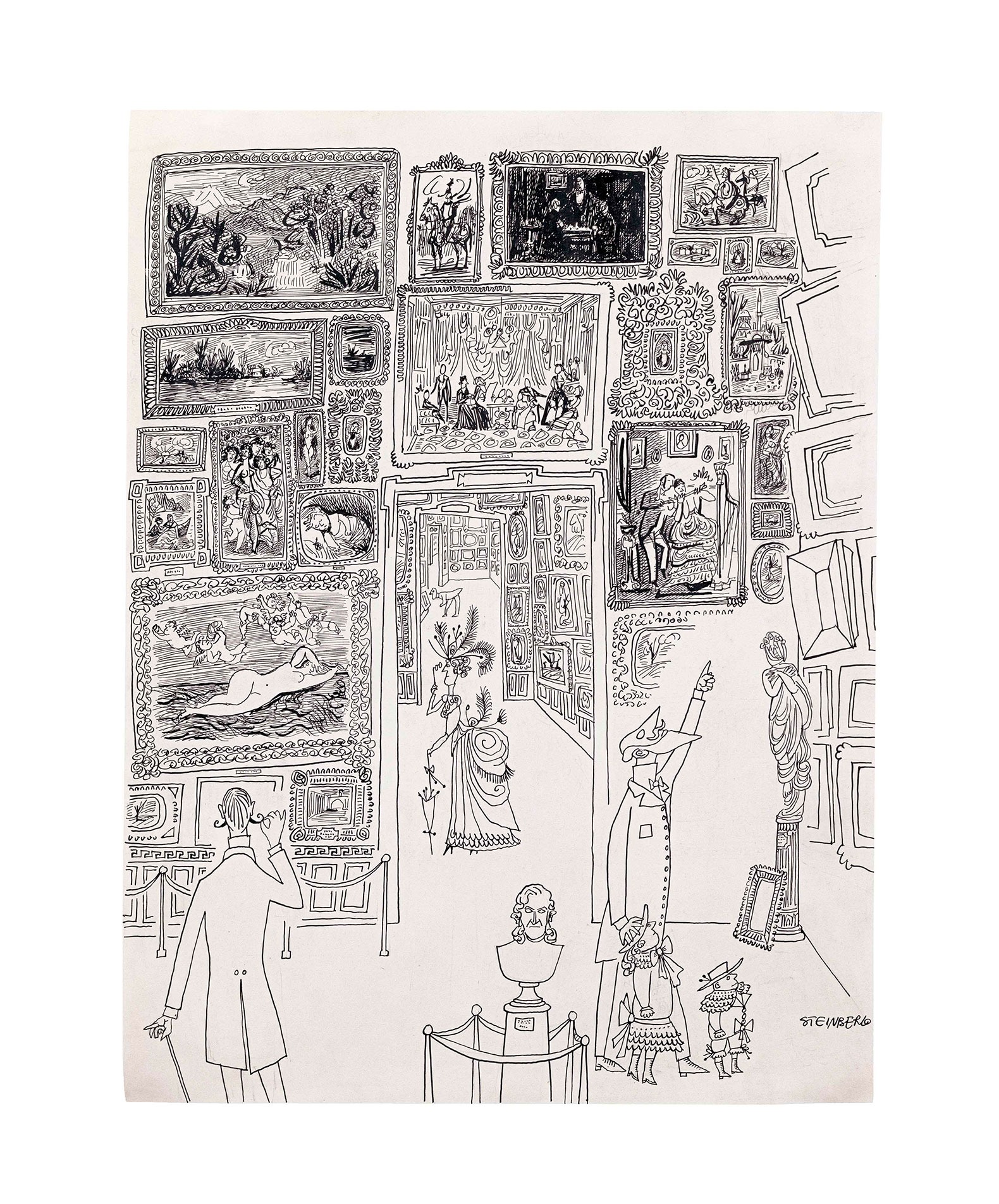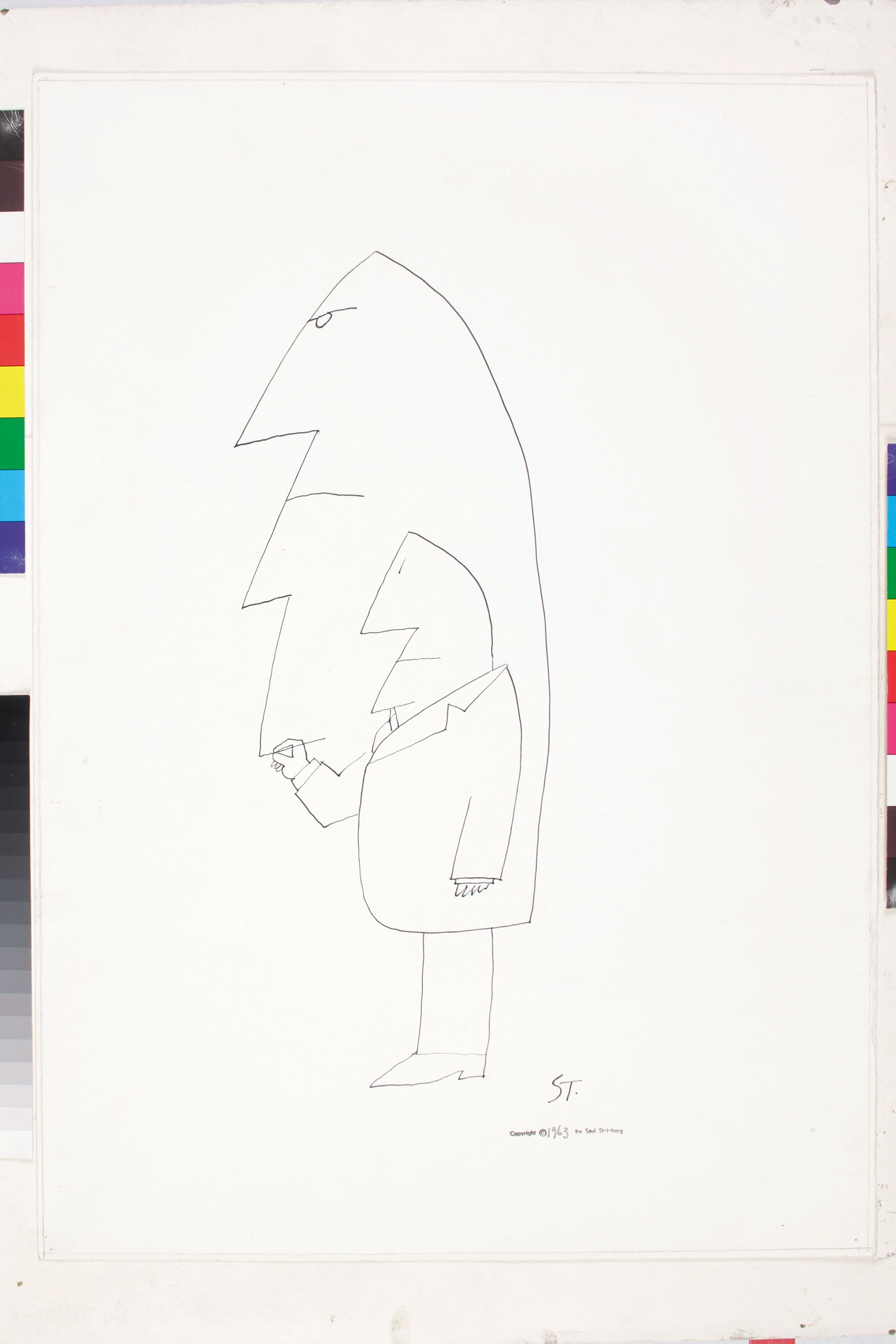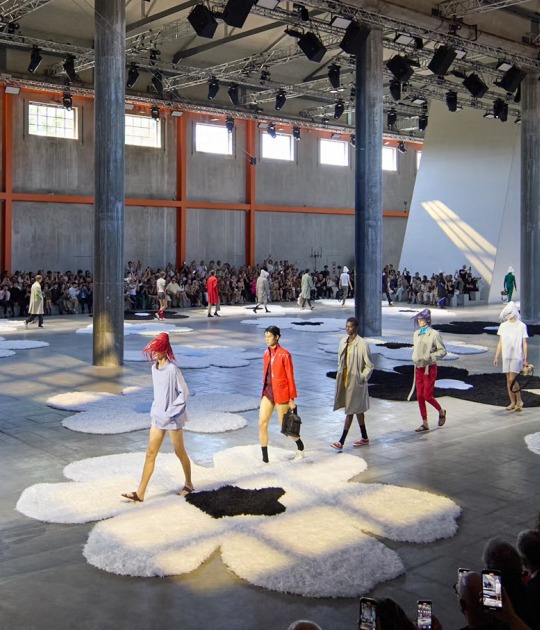
The Juan March Foundation exhibition includes drawings, murals, collages, paintings, engravings, photographs, artist books and magazines, as many media as those that Saul Steinberg chose to develop a work that resists simple classifications. Linked to American abstract expressionism (Pollock, De Kooning, Rothko and Ad Reinhardt), Steinberg chose drawing as a fundamental means of artistic expression.
This monographic exhibition has the participation of the Saul Steinberg Foundation of New York, the main source for research into the artist's work, which has donated more than one hundred pieces by the artist. In addition, the exhibition has collaborated with other international institutions that have received the artist's legacy, such as The Art Institute of Chicago, the Biblioteca Nazionale Braidense of Milan and the Centre Pompidou of Paris.

The exhibition has Alicia Chillida as guest curator in a curatorial team formed by Manuel Fontán del Junco, Aida Capa and Francesca Pellicciari as special advisor. It is accompanied by a profusely illustrated catalogue, which includes historical texts, such as the one published by Harold Rosenberg, where he described him as a "writer of images" in his first monographic exhibition in 1978 at the Whitney Museum in New York, and essays by other researchers such as Sheila Schwartz or María Teresa Muñoz.
A Writer Who Draws
Born in Romania, Steinberg trained as an architect in Italy during his youth. Growing anti-Semitism forced him to leave his native country. He fled to Italy, where Mussolini's anti-Semitic laws forced him to leave Europe. Without documentation and with difficulties, he managed to reach the United States, where he began to collaborate with The New Yorker, a professional relationship that lasted 50 years.
The mass media were decisive in the dissemination of Steinberg's work, who entered American homes as a keen observer and shook up their ways of thinking.
“Given his attraction to pen, ink and pencil, and the complex intellectual nature of his creations, one might think Steinberg is a kind of writer, though he is the only one of his kind,” Rosenberg said. “Steinberg has devised dialogues between the verbal and the visual that include wordplay with multiple levels of verbal and visual meaning, and which have led to comparisons with James Joyce.”

Steinberg chose and transformed drawing as a means of artistic expression, but his work goes beyond that: the ingenuity and play of images are transferred to other less popular media, but key to his production, such as painting, graphics, collage, photomontage, and even “drawing” in three dimensions. His murals, along with his New Yorker covers and some of his most famous series, are included in this retrospective.
In 1946, his work was exhibited at the Museum of Modern Art in New York along with that of other artists such as Isamu Noguchi and Robert Motherwell. His work has been recognized both in the media and in leading contemporary art museums.
"I do not belong entirely to the world of art, nor to that of cartoons, nor to that of magazines, so the art world does not know very well where to place me", wrote Steinberg at the time.

An admirer of Nikolai Gogol and his theatre of the absurd, Steinberg was in tune with some contemporary artists and intellectuals such as Samuel Beckett or Alberto Giacometti and with some exiled Romanians such as Emil Cioran, Constantin Brancusi or Eugène Ionesco, with whom he shared wit and intelligence. Much of his work can be situated in that space between the stage and the book.
"Steinberg was a wanderer because of his biography: Jewish, a draughtsman trained as an architect, prisoner and emigrant. This tangled life line is what draws his character and gives rise to the sign: a sign that moves between signs."
Alicia Chillida, Guest Curator.

The critic Harold Rosenberg said that Steinberg emerged among post-war American artists and revolutionised painting and sculpture by introducing the new theme of the “mystery of individual identity”. This is confirmed by one of his most famous series on the identity of the immigrant, which is on display in this exhibition: The Rubrics.
The city and its immensity, the architecture of New York and his keenness as an observer are some of the symbols and themes that recur in Saul Steinberg’s work. The satire of a decadent America is reflected in his Las Vegas series, while his interest in paradoxes and visual games is evident in Art Viewers, a large mural that is also on display in this exhibition.

The Saul Steinberg Foundation
As part of this exhibition, the Juan March Foundation has received a donation of a total of 115 works from the Saul Steinberg Foundation in New York. These include drawings, photographs, paintings, graphic works and objects, as well as posters and books. Other international institutions have received part of the Steinberg Foundation's collection, such as the Centre Pompidou in Paris, The Art Institute of Chicago, the Biblioteca Nazionale Braidense in Milan and the Museum of Fine Arts in Boston.























































